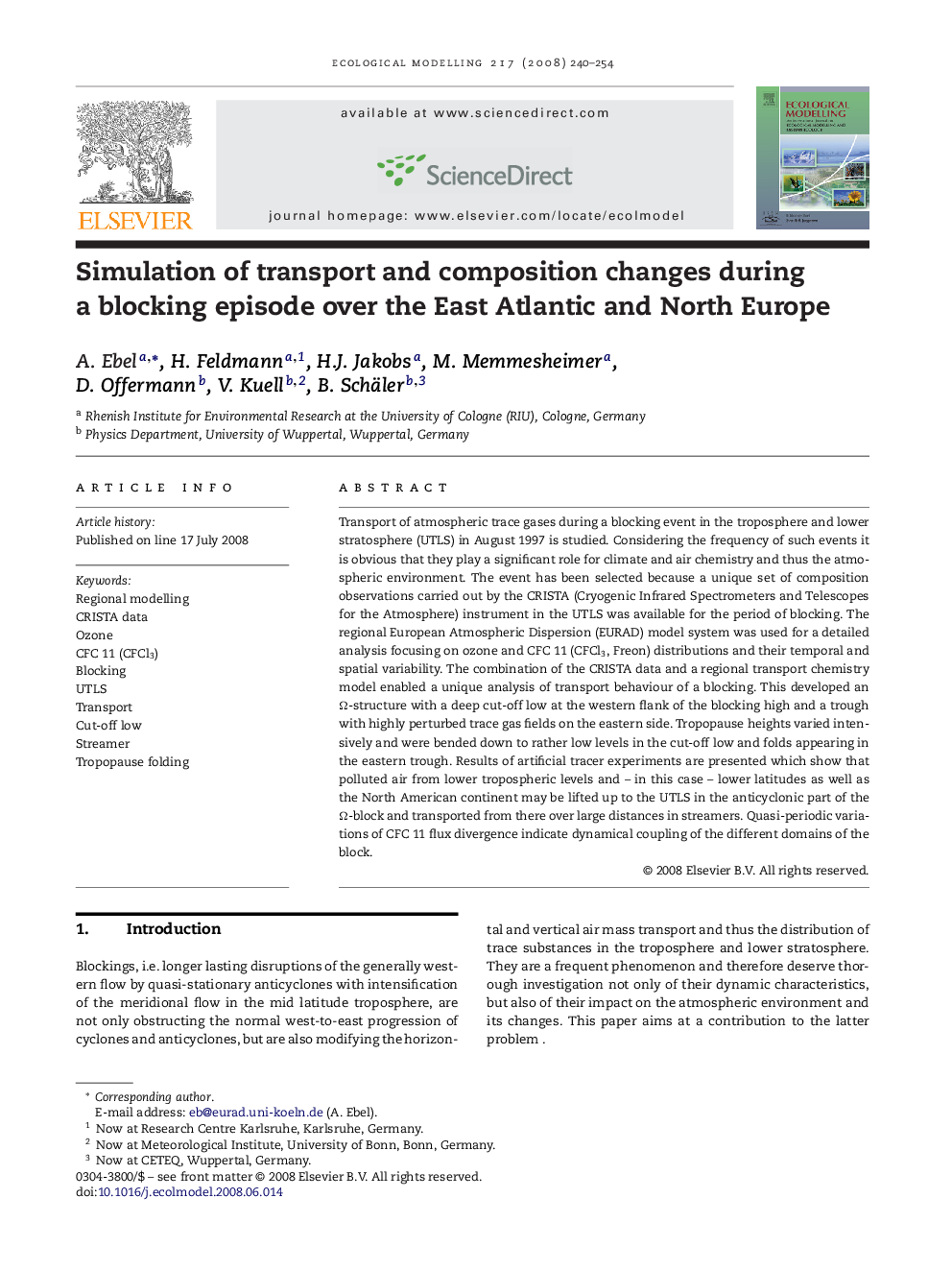| Article ID | Journal | Published Year | Pages | File Type |
|---|---|---|---|---|
| 4377996 | Ecological Modelling | 2008 | 15 Pages |
Transport of atmospheric trace gases during a blocking event in the troposphere and lower stratosphere (UTLS) in August 1997 is studied. Considering the frequency of such events it is obvious that they play a significant role for climate and air chemistry and thus the atmospheric environment. The event has been selected because a unique set of composition observations carried out by the CRISTA (Cryogenic Infrared Spectrometers and Telescopes for the Atmosphere) instrument in the UTLS was available for the period of blocking. The regional European Atmospheric Dispersion (EURAD) model system was used for a detailed analysis focusing on ozone and CFC 11 (CFCl3, Freon) distributions and their temporal and spatial variability. The combination of the CRISTA data and a regional transport chemistry model enabled a unique analysis of transport behaviour of a blocking. This developed an Ω-structure with a deep cut-off low at the western flank of the blocking high and a trough with highly perturbed trace gas fields on the eastern side. Tropopause heights varied intensively and were bended down to rather low levels in the cut-off low and folds appearing in the eastern trough. Results of artificial tracer experiments are presented which show that polluted air from lower tropospheric levels and – in this case – lower latitudes as well as the North American continent may be lifted up to the UTLS in the anticyclonic part of the Ω-block and transported from there over large distances in streamers. Quasi-periodic variations of CFC 11 flux divergence indicate dynamical coupling of the different domains of the block.
